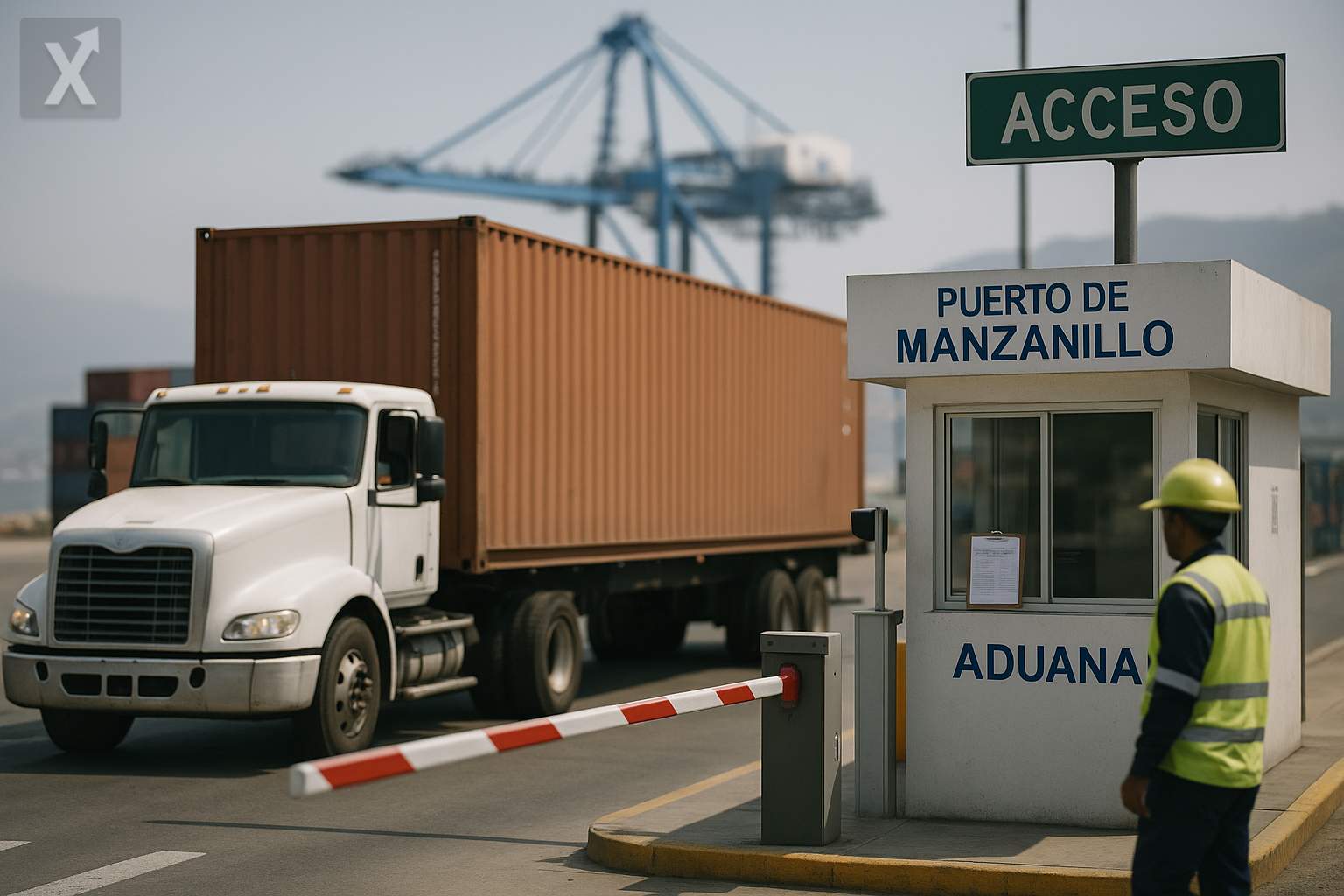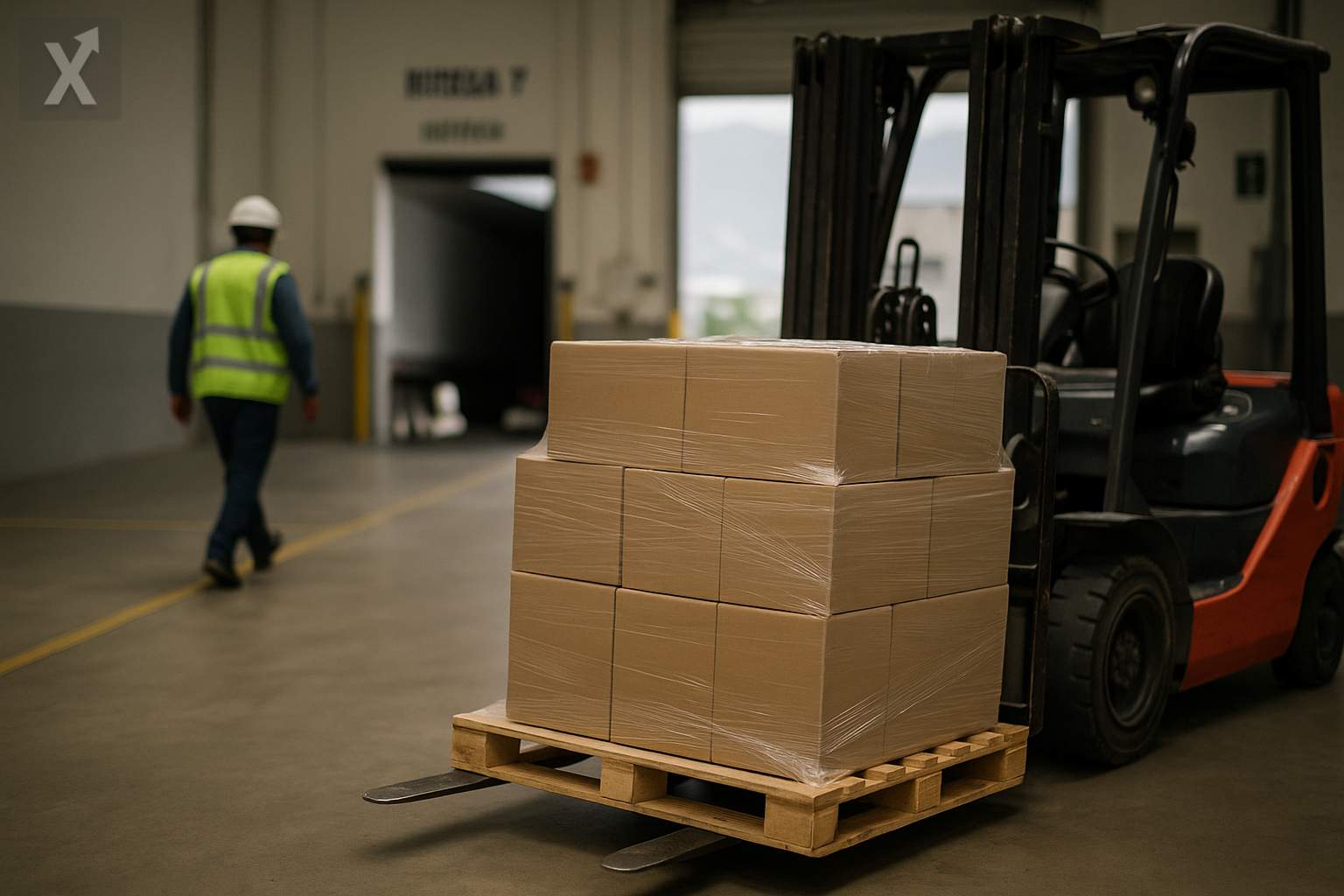Port Tensions Between China and the US Are Raising Freight Costs and Adding Pressure to Mexico’s Expenses

The imposition of new surcharges on port calls between China and the United States, in effect since October 14, is reshaping shipping routes, reducing global fleet capacity, and driving up freight rates on major maritime corridors. International shipping companies have begun skipping ports in both countries to avoid the new charges, which is already reflected in higher rates and more uncertain transit times. Although this is a bilateral dispute, the impact extends to third markets—including Mexico—which depends on maritime transport for its industrial and consumer supply chains.
Container operators such as Maersk, Hapag-Lloyd, and CMA CGM have adjusted their schedules and vessel allocations, cutting specific port calls to avoid the new tariffs. According to industry executives, the number of ships able to call at Chinese or US ports has dropped significantly, increasing operational complexity and the cost to move cargo. The Shanghai Containerized Freight Index has recently surged, driven by transpacific routes—a sign of reduced relative supply compared to transportation demand.
In the energy sector, the measures have also raised the cost of tanker freight to China, the world’s largest crude oil buyer, due to a decreased supply of vessels willing to incur the new fees. While Mexico mostly imports fuel from the US Gulf Coast, tighter global tanker markets could increase transportation costs for hydrocarbons and chemicals across the hemisphere, leading to added pressure on industrial and logistic prices.
For Mexico, the potential impact comes through three main channels: higher and less predictable costs for intermediate goods from Asia; possible changes in shipping schedules that could affect the frequency of calls at the ports of Manzanillo and Lázaro Cárdenas; and a risk premium on freight rates that, if prolonged, could feed into higher inflation for goods. Sectors such as automotive, electronics, textiles, and durable consumer goods—which are highly integrated with Asian suppliers—are most sensitive to increases in transportation costs and supply chain delays.
The logistics landscape was already under strain from recent events—from transit restrictions at the Panama Canal in 2023–2024 to diversions around the Red Sea—which cut effective capacity and lengthened transit times. The new round of surcharges between the world’s two largest economies adds another layer of uncertainty. While the Mexican peso has shown strength in recent quarters, partially cushioning the exchange rate pass-through to import prices, a sustained rise in freight rates could pressure goods inflation—a component closely monitored by the Bank of Mexico.
Mexican companies have stepped up risk management strategies: locking in long-term freight contracts, diversifying suppliers in Asia and the Americas, and boosting safety stocks to cushion disruptions. However, these adjustments bring financial and storage costs that may be passed on to final prices. In parallel, the relocation of production to Mexico (nearshoring) is progressing, but domestic manufacturing still relies on Asian components, making logistics resilience a critical factor.
In the dry bulk segment—which is vital for raw materials like minerals and grain—experts estimate that a portion of the large-vessel fleet is affected by the new rules, reducing shipping options and potentially making agricultural and heavy industry imports more expensive. If disruptions persist, buyers are likely to prioritize reliability over price, reinforcing long-term contracts and alternative routes, with cost structure implications for 2025.
In the months ahead, the trajectory of freight rates will depend on how long the port measures remain in place and on shippers’ ability to rebalance capacity. A easing of tensions could gradually normalize rates; if not, pressure on logistics costs will continue. For Mexico, the combination of a strong labor market, rising manufacturing investment, and a cautious central bank provides some macro-level stability, but external uncertainty is forcing companies to develop contingency plans and secure critical inventories.
In short, this new chapter of port frictions between China and the US adds volatility to an already strained shipping chain. For Mexico, the main risk is sustained higher freight costs and greater variability in delivery times, with an impact on industrial costs and, eventually, consumer prices. Active risk management and supplier diversification will be key to cushioning the blow.






